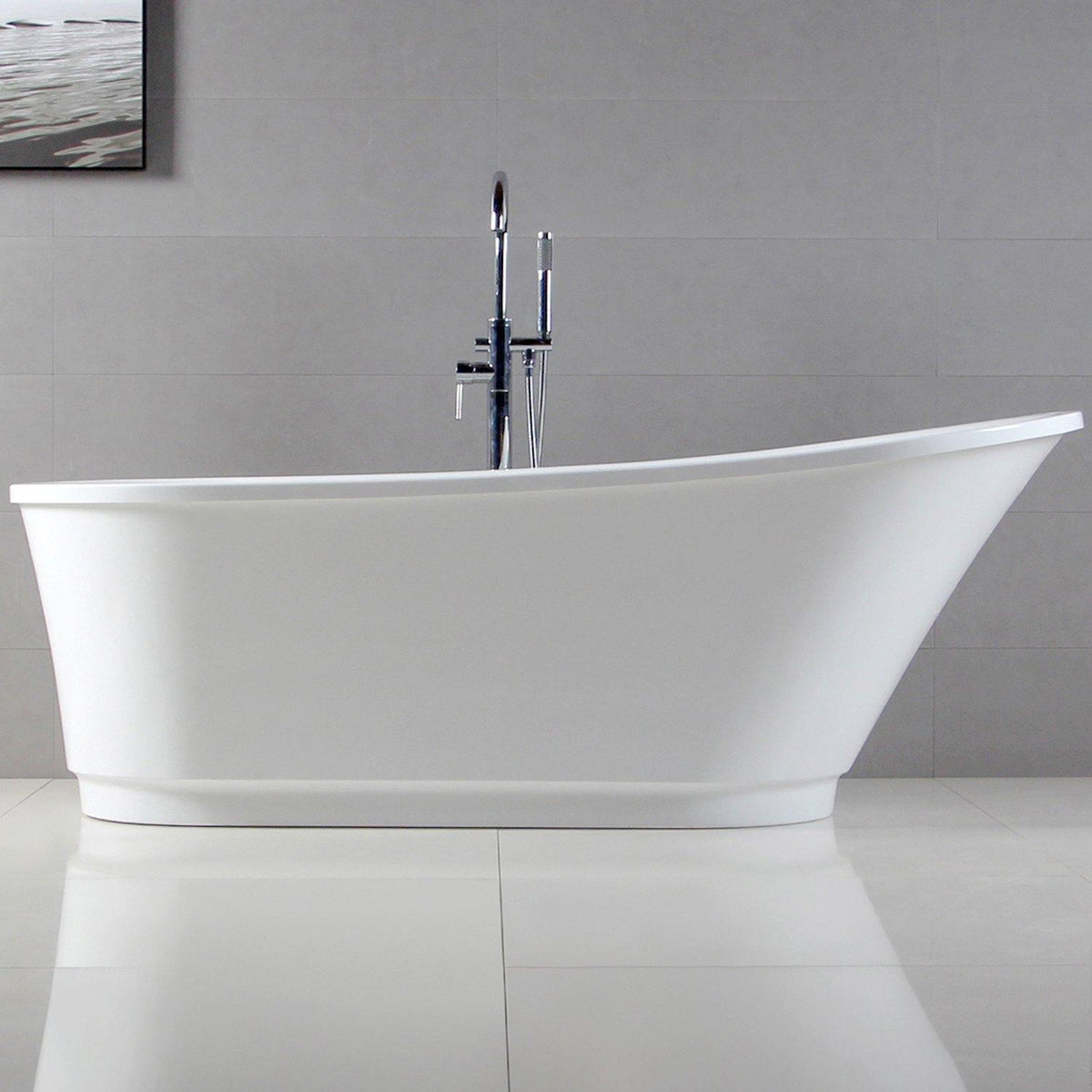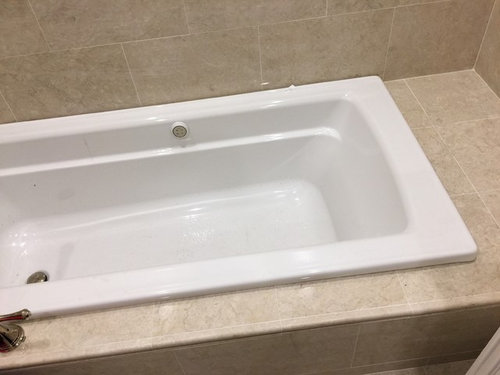Can I Set Up A Bathtub Myself?
Can I Set Up A Bathtub Myself?
Blog Article
How do you feel with regards to Installing A Bathtub?

Setting up a bathtub isn't specifically rocket science, yet it does need strong plumbing, carpentry, and also in some cases, tiling skills. Changing an old tub with a brand-new one is likewise a reasonably challenging task. If the old tub is conveniently available, the job can move immediately; if you have to open up a wall surface to eliminate the old bathtub and position the brand-new bathtub, the task is a lot harder. In either case, the job is within a residence handyman's skills, although you will certainly require a helper to leave the old tub and set in the brand-new one. See to it you have actually qualified yourself for the work and fit trying it. As opposed to employing a contractor to take control of a halfway-completed task, it is better to think about employing one before you start. Opportunities are you may need a specialist plumber to make tube connections.
This short article will certainly aid you install a new tub in your washroom if you have already purchased a new bathtub and also don't require to transform the arrangement of your previous water supply pipes.
Your devices and also material checklist must consist of the following:
Removing Old Touches
If you need to change old faucets with brand-new ones as a part of your installation, then the first thing you should do is detach the supply of water. After doing so, switch on the faucets to drain pipes any kind of water remaining in the system. The process of removing the existing taps can be quite problematic due to the restricted accessibility that is typically the situation.
Utilize a basin wrench (crowsfoot spanner) or a tap tool to undo the nut that links the supply pipes to the taps. Have a cloth ready for the remaining water that will come from the pipes. Once the supply pipelines have been eliminated, utilize the exact same tool to loosen the nut that holds the taps onto the bath/basin. You will require to quit the solitary taps from turning during this procedure. When the faucets have actually been eliminated, the holes in the bath/basin will have to be cleaned of any type of old sealing compound.
Before proceeding to fit the new faucets, contrast the pipeline connections on the old taps to the brand-new taps. If the old taps are longer than the brand-new faucets, then a shank adapter is required for the brand-new taps to fit.
Fitting New Touches
If the tails of the brand-new faucets are plastic, after that you will require a plastic port to avoid damage to the string. One end of the connector fits on the plastic tail of the faucet as well as the other end gives a connection to the existent supply pipelines.
If you need to fit a monobloc, after that you will call for decreasing couplers, which connects the 10mm pipeline of the monobloc to the conventional 15mm supply pipe.
Next off, position the faucet in the installing hole in the bath/basin making certain that the washers are in place between the faucet as well as the sink. Safeguard the tap in place with the producer supplied backnut. Once the faucet is securely in place, the supply pipelines can be linked to the tails of the faucets. The taps can either be linked by using corrugated copper piping or with regular tap connectors. The former kind ought to be attached to the tap finishes first, tightening up only by hand. The supply pipes can later on be connected to the other end. Tighten up both ends with a spanner after both ends have actually been connected.
Mounting the Bath tub
Making use of the two wood boards under its feet, position the bathtub in the needed placement. The wooden boards are valuable in uniformly spreading out the weight of the bath tub over the area of the boards rather than concentrating all the weight onto 4 small factors.
The following objective is to make certain that the bathtub is leveled all round. This can be accomplished by examining the spirit level as well as changing the feet on the bath tub till the spirit level reads level.
To install taps, fit all-time low of the outermost flexible tap connector to the proper supply pipeline by making a compression sign up with; after that do the very same for the various other tap.
Switch on the water and inspect all joints as well as brand-new pipework for leakages and also tighten them if necessary. Fill up the tub and likewise examine the overflow electrical outlet and also the normal outlet for leaks.
Ultimately, fix the bath paneling as explained in the maker's user's manual. Tiling and also securing around the bath tub ought to wait up until the bathtub has been used at least once as this will settle it into its final setting.
Getting ready for the Setup
First of all, the supporting framework supplied with the bath should be fitted (if required) according to the manufacturer's instructions. Next off, fit the taps or mixer to the tub. When fitting the tap block, it is essential to ensure that if the tap comes with a plastic washing machine, it is fitted in between the bath and the faucets. On a plastic bathroom, it is also sensible to fit a sustaining plate under the faucets unit to prevent stress on the bath tub.
Fit the flexible tap ports to the bottom of the two taps utilizing 2 nuts and olives (in some cases provided with the tub). Fit the plug-hole outlet by smearing mastic filler round the sink outlet hole, and afterwards pass the outlet with the hole in the bathroom. Use the nut supplied by the supplier to fit the plug-hole. Check out the plug-hole outlet for an inlet on the side for the overflow pipeline.
Next, fit the end of the flexible overflow pipeline to the overflow outlet. After that, screw the pipe to the overflow face which must be fitted inside the bathroom. Make sure you use every one of the supplied washers.
Connect the catch to the bottom of the waste outlet on the bathtub by winding the string of the waste electrical outlet with silicone mastic or PTFE tape, and also screw on the trap to the electrical outlet. Link the bottom of the overflow tube in a comparable manner.The bath ought to now be ready to be fitted in its final position.
Tiling Around the Bathtub
In the location where the bathroom satisfies the ceramic tile, it is essential to seal the joins with a silicone rubber caulking. This is essential as the fitting can move enough to break a rigid seal, causing the water to penetrate the wall surface in between the bathroom and the tiling, resulting in complications with dampness and also feasible leaks to the ceiling below.
You can choose from a variety of coloured sealers to assimilate your fixtures and fittings. They are sold in tubes and also cartridges, and also can securing voids as much as a width of 3mm (1/8 inch). If you have a larger void to fill up, you can fill it with twists of drenched paper or soft rope. Keep in mind to always load the bathtub with water prior to securing, to enable the movement experienced when the bathtub remains in use. The sealer can split relatively early if you do not take into account this motion before securing.
Additionally, ceramic coving or quadrant tiles can be made use of to border the bath or shower tray. Plastic strips of coving, which are easy to use and reduce to size, are also conveniently offered on the market. It is suggested to fit the ceramic tiles using waterproof or water resistant glue as well as grout.
Bathtub Installation
How Important Is A Bathtub To Your Home?
High-quality baths, showers, and other bathroom updates are necessary when considering a smart investment in your home. It’s a room that you go to every day and one that is constantly being used by guests.The bathroom is one of the top trafficked rooms in a home and also one of the most valuable in terms of home resale.
Install Piping Before Tub
You will be using your existing drain and waste vent system, but pipes required include the hot and cold water supply lines and a pipe leading to a shower head. A mixing valve and shower head are also needed. Air chambers may be required.
Position the Tub
Lower the tub into place so that the continuous flange fits against the wall studs and rests on 1’x4' or 2’x4' supports. Anchor the tub to the enclosure with nails or screws inserted through the flanges into the studs.
NOTE: Remember, bathtubs and shower stalls may require support framing. A bathtub filled with water is extremely heavy, so check building codes and framing support before installing the tub.
Assemble Drain Connections
Assemble the bathtub drain connections by connecting the tub overflow with the tub drain above the trap, not beyond it. The trap will have a compression fitting that screws over the arm of the overflow assembly.
Place a Pipe For the Shower Head
First, locate a brass female threaded winged fitting and attach it to a framing support via a screw or a nail. Then run a pipe up the wall for the shower head. Sweat or solder the other side of the brass fitting to the top of the pipe.
Attaching Hot and Cold Water Lines
Attach your water lines for both hot and cold by sweating these directly into the hot and cold ports of the mixing valve. The mixing valve will be how water enters the tub’s system, not by the pipes themselves.
Install the Spout
Extend a piece of 1/2 inch pipe, or whichever length is specified in the manufacturer’s instructions, for the tub spout. Sweat on a male threaded fitting at the end of the pipe or use a brass nipple of the proper length and a 1/2 inch cap.
NOTE: At this point you should have your rough-in plumbing work inspected before proceeding further.
Check For Leaks
Restore the water pressure and check the drain connection and the supply pipes for any sign of leaking.
estore the Bathroom Wall
Replace the wall with moisture-resistant drywall as a base for your wall covering. Seal the joints between the wall and your new tub with silicone caulk as protection against water seepage.
https://www.berkeys.com/2016/12/02/bathtub-installation-dallas/

Do you enjoy reading up on How to Install a Bathtub? Post a comment further down. We'd be interested to know your opinion about this entry. We are looking forward that you visit us again soon. Are you aware of anybody else who is truly interested in the niche? Why not promote it. Thanks for your time. Kindly pay a visit to our website back soon.
Estimate Free
Report this page